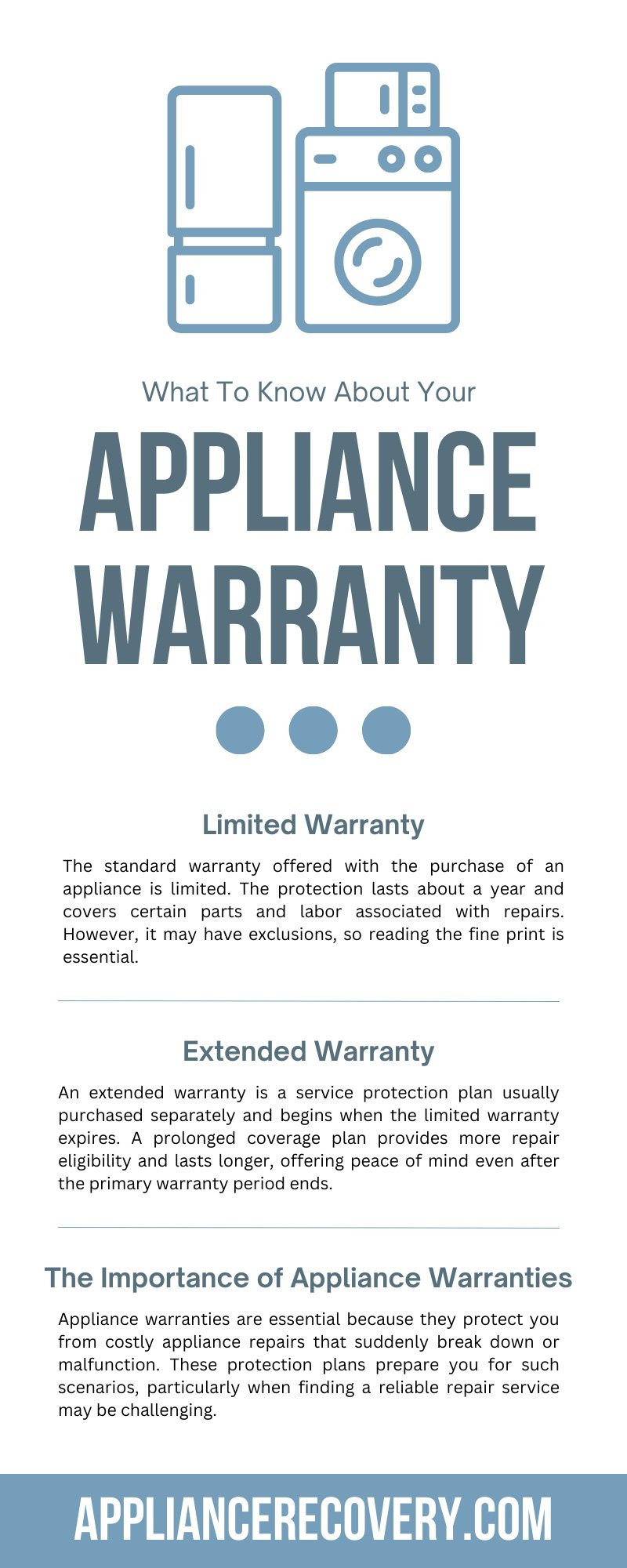
Honestly, the idea of “claiming a warranty” often sounds more complex than it actually is. You’re not required to speak in legalese or jump through impossible hoops. It’s really just about gathering a few details, making the right call (literally), and understanding what’s actually covered under the GE warranty plan. If you’re standing in your laundry room, scratching your head over a blinking error code, or feeling lost over how to sync up with GE support, let’s walk through how the whole warranty claim process works—step by step.
Understanding GE Laundry Appliance Warranties
Here’s the thing about GE appliance warranties: they’re designed to protect you against defects in materials and workmanship, but they don’t cover absolutely everything. The standard GE warranty, which applies to most washers and dryers, usually gives you a period—often one year—where GE will handle certain repairs, replacement parts, or even swap out the product if things go really sideways. The exact details might change depending on whether you bought a fancy GE front-load washer or a classic top-load dryer, so it’s worth pulling out your owner’s manual or warranty booklet.
Now, you might be wondering: what’s actually included in a “warranty”? With GE laundry appliances, coverage usually extends to things like failed motors, faulty control boards, error codes that just won’t reset, or wires that fray before their time. But there are limits. They won’t cover cosmetic scratches, issues caused by power surges, or damage from improper installation. If you’ve tried to code a DIY fix and accidentally made things worse, that probably won’t be covered either.
It’s also important to know the difference between a manufacturer’s warranty and a retailer’s extended protection plan. The manufacturer’s warranty comes straight from GE and starts the day you buy your appliance—no sign-up required. If you bought an extra service plan from the store, that’s a different process, handled by that specific retailer. Keeping track of which warranty you’re claiming is key to getting the right help.
When Should You File a GE Laundry Warranty Claim?
Filing a warranty claim isn’t something you do every time your washer makes a funny sound. Let me explain. First, you’ll want to do a bit of troubleshooting. Sometimes, an unplug-and-reset works wonders (kinda like rebooting your phone), or a battery swap in your remote control panel can solve “dead” button issues. If you’ve tried the basics—checking for power, making sure the door is closed, inspecting the filter—and your appliance still doesn’t work, that’s when the warranty might be your next step.
You might be dealing with a mysterious error code that won’t sync with what the manual says. Or maybe your unit suddenly won’t pair with your home’s electrical system, even though you’ve had no issues before. If the appliance is still within the warranty period—check your receipt or look up the serial number—it’s time to reach out to GE.
It’s smart to file a claim sooner rather than later, especially if you’re approaching the end of your coverage. Waiting too long could leave you stuck paying for repairs out of pocket. If you’re not sure, give GE support a quick call; they can check your model and let you know if your laundry appliance is still eligible.
What You Need Before Filing Your Warranty Claim
Before you pick up the phone or jump online to claim your warranty, a bit of prep work can save you a headache later. Trust me, digging through your kitchen drawer for a lost receipt while you’re on hold is nobody’s idea of a good time. Here’s a checklist to keep things simple:
- Model and Serial Numbers: These are usually found on a sticker inside the door or on the back panel of your GE appliance. Jot them down.
- Proof of Purchase: Your original sales receipt shows when you bought the laundry machine. If you can’t find it, check your email for a digital receipt or look up your order history if you bought online.
- Error or Trouble Codes: If your washer or dryer is flashing codes, write those down. They help GE troubleshoot faster.
- Details of the Problem: Be as specific as possible. Does your washer refuse to spin? Does the dryer overheat and shut off? Specifics help the support team figure out what parts you might need.
It pays to be organized. Having this info ready can make your warranty claim call feel more like a quick chat and less like a scavenger hunt.
How To File a Warranty Claim with GE Appliance Support
Alright, paperwork in hand, here’s how you actually file your claim. GE makes it pretty straightforward—no secret handshake required.
You can start by visiting the official GE Appliances website and heading to their support section. There’s usually an online form where you enter your model, serial number, and describe the problem. Or, if you prefer a human voice, you can call the GE warranty support line directly.
Once you’re connected—either online or on the phone—you’ll be walked through some basic troubleshooting. Expect the support team to ask about error codes, any attempts you’ve made to reset or pair the device, and whether the appliance’s battery (if applicable) is working. Don’t stress if you don’t know technical terms; just describe what’s going wrong in plain language.
If the support team can’t fix the problem remotely, they’ll schedule a service call with an authorized GE technician. Sometimes, they’ll ship you a replacement part if it’s a quick fix (like a broken remote or control panel button). All you have to do is follow their instructions, and keep your case number handy in case you need to follow up later.
What Happens During a GE Warranty Service Visit?
You might be wondering what actually happens after you’ve filed your claim and a service visit is scheduled. Let me walk you through it. A GE-certified technician will come to your home and take a look at your laundry machine. They’ll usually run diagnostics, check the error codes, and may even perform a manual reset, sync, or code review on your washer or dryer.
If they find a part that’s faulty—like a control board that won’t respond or a sensor that’s stopped working—they’ll either repair it on the spot or order a replacement. In most cases, you won’t have to pay for these repairs, unless the damage isn’t covered by the warranty (think: pet damage, flood, or something truly out of the ordinary).
If the technician can’t repair the unit or if the problem keeps coming back, GE may offer a replacement appliance. It doesn’t happen every time, but if your machine is a true lemon, it’s possible. While waiting, try not to tinker with the appliance further. Let the pros handle it. Your warranty is only valid if you follow GE’s instructions.
What’s Not Covered Under GE Laundry Appliance Warranty?
Here’s where expectations matter. Not every breakdown or hiccup qualifies for a free fix under warranty. You might be surprised by what’s not included. The most common “no-go” situations involve:
- Cosmetic Damage: Scratches, dents, or discoloration from regular use aren’t covered.
- Improper Installation or Use: If your laundry appliance wasn’t installed to code, or you used it in a way not recommended by GE (like overloading the washer), the warranty may be void.
- Power Surges or Accidents: Damage from electrical surges, fires, or natural disasters aren’t the manufacturer’s responsibility.
- Unauthorized Repairs: If you try to fix the machine yourself or use a non-GE technician for repairs, you risk losing your coverage.
Warranties are kind of like seat belts—they’re there to protect you when something goes wrong, but only if you’re wearing them correctly.
So, before you file a claim, check your owner’s manual and warranty terms. When in doubt, ask the GE support team if your situation qualifies.
Tips to Smooth the Warranty Claim Process
Streamlining your GE warranty claim is less about being an expert, and more about staying calm and following the process. Here’s a recipe for a smoother experience:
- Document Everything: Snap a photo of your receipt, jot down any error codes, and keep all emails or case numbers from GE support. This will give you a paper trail if you need to follow up.
- Be Patient and Persistent: Sometimes support lines are busy, or parts take a while to arrive. Politely check in if your claim seems stalled.
- Ask For Clarification: If you don’t understand what the technician or support rep is explaining about a code, reset, or pair procedure, ask for plain English. They’re usually happy to help.
- Don’t Void the Warranty: Avoid DIY repairs or letting a non-GE technician work on your laundry appliance while your claim is active.
The squeaky wheel gets the grease, but the organized customer gets the warranty approved.
Alternatives If Your GE Warranty Claim is Denied
If GE says “no” to your claim, don’t panic. There are a few backup plans you can consider if your washer or dryer is out of warranty or the issue isn’t covered.
First, see if your appliance is still eligible for a paid repair through GE’s extended service plans, or check if your credit card or home insurance policy includes appliance protection. Some cards cover purchases for an extra year, and you might not even know it.
You could also consider using a universal remote or replacement part for minor issues (like a lost washer control or dryer remote), but make sure you choose a part that’s compatible with GE codes and can pair or sync—otherwise, you may end up with more headaches.
If repairs are too costly, look into certified refurbished GE laundry appliances. These often come with a new warranty and can save you a bundle compared to buying new. Think of it as hitting the reset button on your laundry setup.
Final Thoughts on Navigating GE Laundry Appliance Warranty Claims
Claiming a warranty for your GE laundry appliances doesn’t have to feel like deciphering a secret code or trying to sync three remotes at once. It all comes down to knowing what’s covered, gathering your info, and working with GE’s support team. Most importantly, staying organized and calm goes a long way toward getting quick, effective help—even if your laundry day is temporarily on pause.
In the end, warranties are there to save you time, money, and frustration. Treat them like a safety net, not an afterthought. The next time your GE washer or dryer acts up, you’ll know exactly how to handle the warranty process—and get back to tackling those mountain-sized piles of socks and towels.
